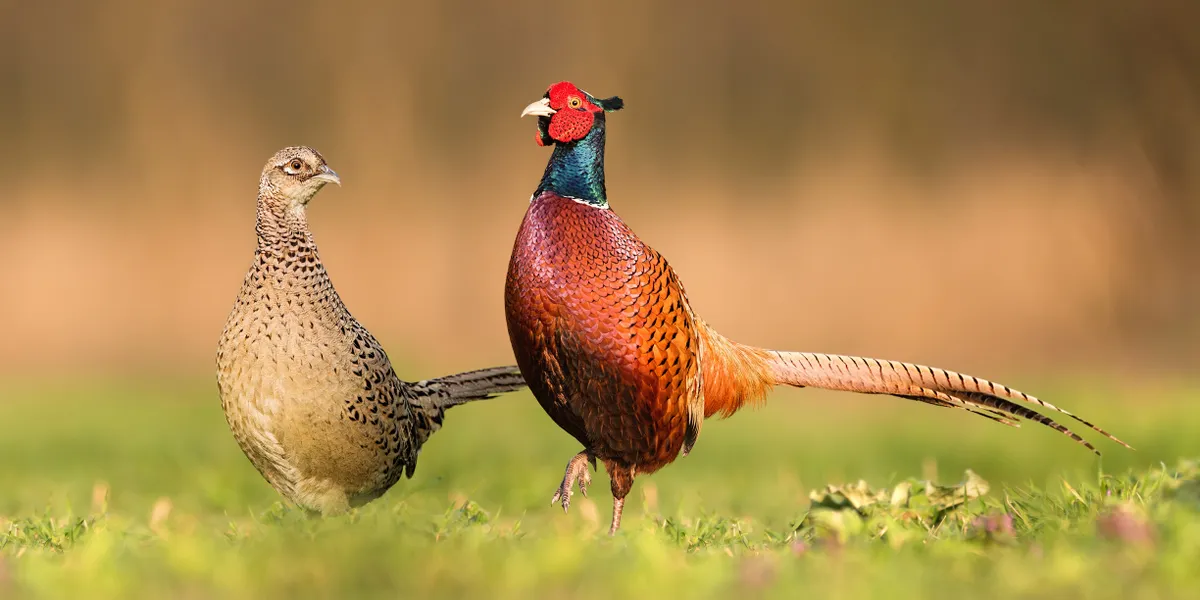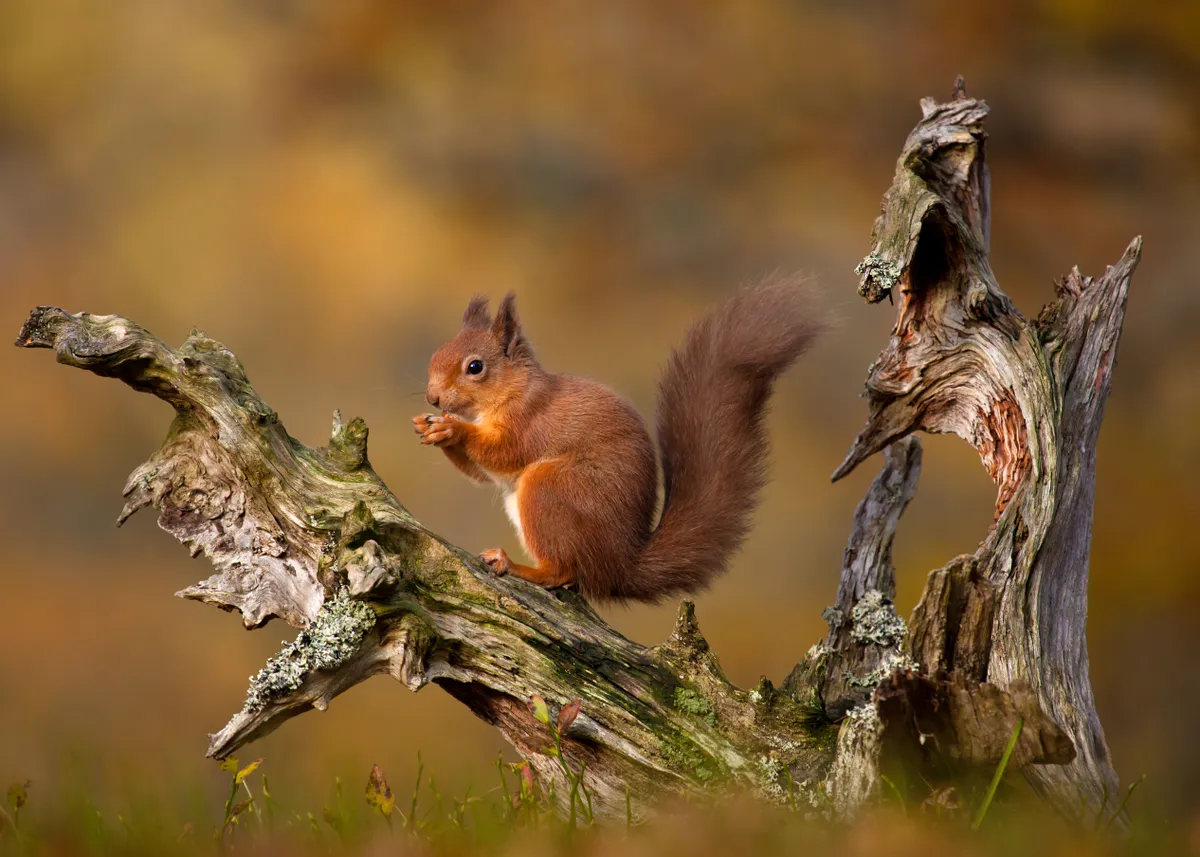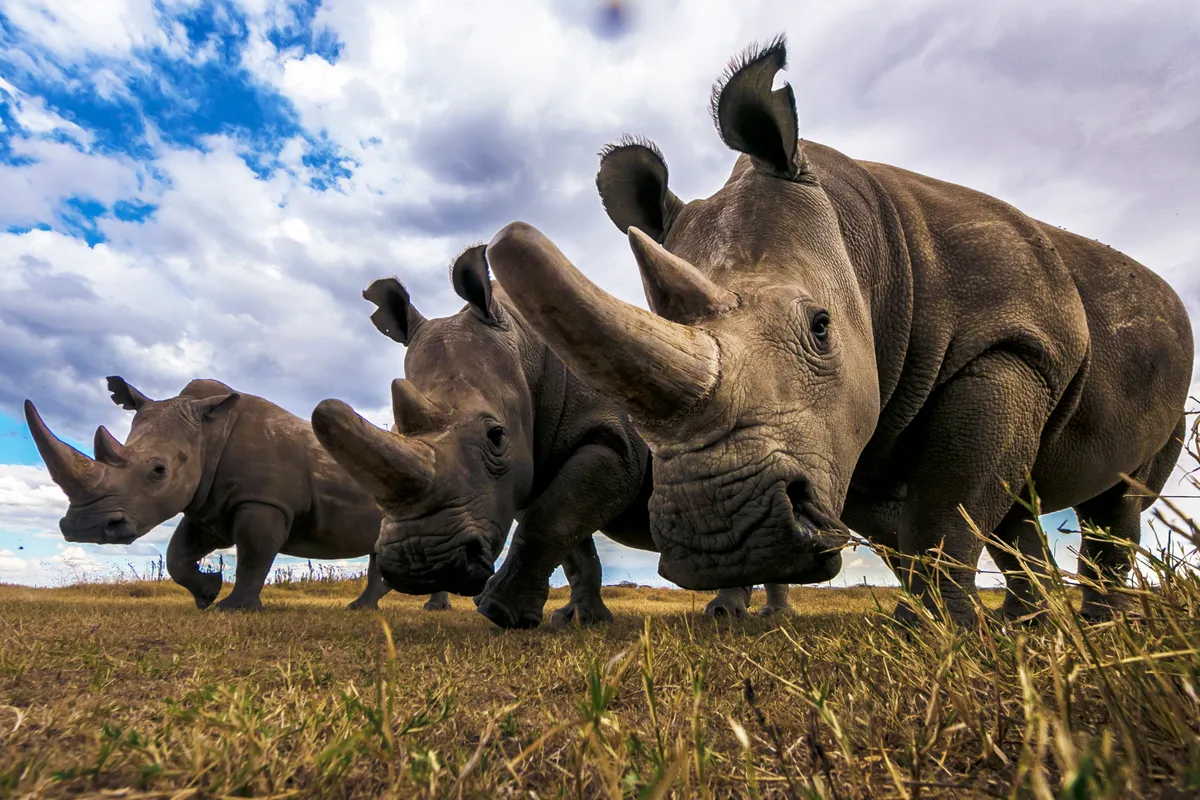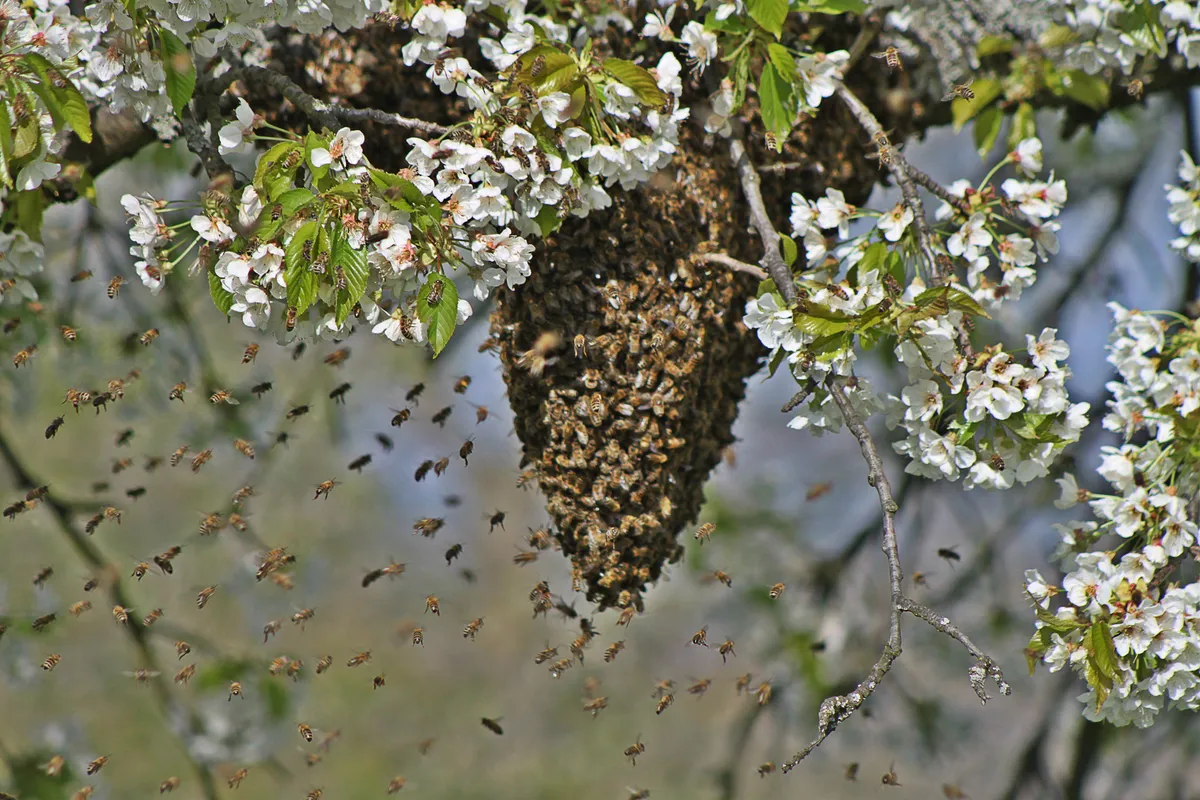You may have heard of ‘a school of fish’, ‘a pride of lions’ or ‘a pack of wolves’, but have you ever come across ‘a shrewdness of apes’ or ‘a confusion of wildebeest’?
In this article, author and investigator of languages and interesting words Adam Jacot de Boinod takes a look at some of the more unfamiliar animal collective nouns.
What is a collective noun?
A collective noun is a countable noun that refers to a group of people or things. There are various animal collective nouns that you're probably already familiar with such as ‘a flock of sheep’ or ‘swarm of bees’, but there are also an astonishing number of intriguing animal collective nouns that you may not have heard of before.
Collective nouns for different groups of animals:
What is a group of crows called?

The term ‘a murder of crows’ probably derives from 15th-century peasants’ fears that these sinister-looking birds, with dark feathers and jet-black eyes, were witches in disguise or messengers of the Devil. They descended onto battlefields to pick at the fallen and, with their alleged prophetic powers, they appeared on roofs to portend that someone inside would soon die. Their other collective nouns include ‘mob’, ‘parcel’ and ‘horde’.
What is a group of wildebeest called?

The term ‘a confusion of wildebeest’ is so-called from the noise and disorientation of these animals when they gather for their giant migration, when around two million of them unite to search for greener areas. In the process many die in stampedes, which typically feature 500 wildebeest travelling at speeds of up to 50mph and which can last for 30 minutes: chaos ensues when they dash through treacherous waters, as they fall prey to predators.
What is a group of geese called?

The term ‘a gaggle of geese’ has been so-called since the 15th century because when they get together they get quite noisy and rowdy. It’s only when they’re on the ground that they come in ‘gaggles’; their other collective nouns depend on whether they’ve gathered on water ‘plump’ or flying (‘skein’, ‘team’ or ‘wedge’): the latter two reflecting their graceful travelling en masse.
What is a group of hippos called?

The term ‘a bloat of hippopotamuses’, coined in 1939, comes from their large, indeed bloated bellies; a male hippo weighs around 8,000lb and is covered in subcutaneous fat that helps him float. Their stomachs are typically bloated from a diet almost exclusively of grass which they ingest and store for up to three weeks. A typical ‘bloat’ would consist of one male hippo amongst 10-20 females.
What is a group of apes called?
The term ‘a shrewdness of apes’ was coined in 1486, at a time when scientists wouldn’t have attributed to apes the cognitive ability we now recognise in their brains and habits. ‘Shrewdness’ around the time of the 15th century meant wickedness and came from a sense of playfulness and mischief. However, today it denotes intelligence and astuteness. So, by a stroke of linguistic luck, the phrase has maintained its currency.
What is a group of owls called?

The term ‘a parliament of owls’ comes from The Chronicles of Narnia novels, written by C S Lewis in 1950s. It’s a reference to Chaucer’s poem The Parliament of Fowls, where the world’s birds gather to find a mate. Lewis adapts Chaucer with a council of owls who meet to discuss the affairs of Narnia. Owls are thought to be wise ever since the Ancient Greeks depicted the birds accompanying and representing Athena, the goddess of wisdom.
What is a group of jellyfish called?

The term ‘a smuck of jellyfish’ is most likely to have come from simple onomatopoeia, derived from the sound, like a noisy kiss, a stranded jellyfish makes when it’s stepped on. ‘Smuck’, like a plastic bag full of water being popped. They often become stranded together on beaches where they dry out and die. Their other collective nouns include crowd, bloom, brood, stuck, smuth, swarm, fluther and smack.
What is a group of woodpeckers called?

The term ‘a descent of woodpeckers’, like other collective nouns for animals, is named after their peculiar habits. The most common of the three indigenous species is the green woodpecker which descends to the ground more frequently than the great spotted and lesser spotted, swoops down from great heights on ants from the top of one tree to the base of another as well as moves backwards down the trunk with its head uppermost.
What is a group of starlings called?

The term ‘a murmuration of starlings’ derives from the medieval Latin word for grumbling and the reference to starlings is probably derived from the sound of the very large groups that starlings form at dusk with a murmuration reckoned to comprise an ongoing background murmur such as that caused by the beating of 10,000 pairs of wings at once. Their other collective noun is a ‘chattering’.
What is a group of bullfinches called?

The term ‘a bellowing of bullfinches’ is the collective noun for a bird that actually lacks a powerful flocking instinct unlike many finch cousins and must derive from their extraordinarily thick necks; after all the name ‘bullfinch’ comes from its bull-like appearance and compact, neck-less body. Its short, deep bill, when it’s feeding, emits its renowned singing with a low-pitched short whistle or fluted 'phu' note: a distinct, continuous 'pipping' sound.
What is a group of ravens called?

The term ‘an unkindness of ravens’ most likely comes from a false 19th century theory that ravens weren’t remotely caring parents, prematurely expelling their young from their nests to look after themselves.
Their association with bad luck, Halloween and death stems from their jet-black colour, their ever-watchful eyes and their scavenging around dead things. Their other collective nouns include ‘rave’, ‘treachery’, ‘conspiracy’ and the more generic ‘flock’.
What is a group of turtles called?

The term ‘A bale of turtles’ derives most likely from the shape they take when huddled together in their shells: a bale being a large wrapped or bound bundle typically of paper, hay or cotton. One well-recognised feature of turtles is their desire to group and team up to stay safe. Their other collective nouns include dole, turn, dule and nest. Linguists amongst you may know that the top part of a turtle’s shell is a carapace but not perhaps that the bottom is a plastron.
What is a group of pheasants called?

The term ‘A nye of pheasants’ derives either from a ‘nye’ being a corruption of ‘an eye’ (being an Old English word for a brood) or from the French ‘nid’ for nest. There are many variants in the spelling including nide, nie and ny. Their other collective nouns include head, nest and nide. For more specific categorisations a brood is a family of pheasants, a brace a pair of shot birds and a bouquet a general gathering.
What is a group of porpoises called?

The term ‘a gam of porpoises’ derives from the word gam being both a collective noun used also of whales as well as a nautical term for a social gathering of two or more whaleships at sea when, after hailing each other, they exchange visits by the boats' crews. Their other collective nouns, which apply to several other animals, are pod (which apply to seals and hippopotami), herd (to cows) and school (to fish).
What is a group of stoats called?

The term ‘a pack of stoats’ refers less to the notion of stoats as marauders, or to an image of them as a bullying gang, as to their being simply in a family group in which there can be as many as twelve in a litter. A stoat is distinguishable by its black tail-tip from a weasel which also shares the same collective noun ‘pack’. Their other collective nouns include caravan, gang and trip.
What is a group of hawks called?

The term ‘a cast of hawks’ derives from sporting terminology in reference to birds cast from the fist in both falconry or hawking. Strictly speaking the term relates only to a pair of hawks being ‘cast’; if there were three it would be a leash. Their other collective nouns include aerie, knot, mews, moulting, screw, stream and schizophrenia. For other specific categorisations there is boil (used for two or more spiralling in flight) and kettle (used when flying in large numbers).
What is a group of storks called?

The term ‘A mustering of storks’ derives from muster meaning a general gathering or assembly; while mustering is applied particularly to troops arranged together for an inspection the word is also used in the animal world for a round-up of livestock particularly in the Antipodes as well as also being one of the collective nouns used for peacocks. The other collective nouns for storks include the shorter muster as well as flight and phalanx (used when migrating).
What is a group of moles called?

The term ‘A labour of moles’ derives from the image of moles as hardworking miners toiling underground for the common good. Indeed they have always been thought of as industrious, with both Virgil and Dryden talking of “the blind laborious mole” even if the evidence of it above ground has proven an unwelcome sight to farmers causing moles to have long been regarded as vermin. Their other collective nouns include fortress, movement and company.
What is a group of squirrels called?

The term ‘a dray of squirrels’ derives from the alternate spelling of the word drey which is a term for the squirrel’s nest be it a tree squirrel, flying squirrel or ringtail possum. Dreys are usually built from twigs, dry leaves, and grass and tend to be assembled in the forks of a tall tree. The word squirrel is derived from its bushy tail which was once thought to serve as an umbrella and comes from the Greek ‘skia’ meaning shade and ‘oura’ meaning tail. Their other collective nouns include squad, colony and scurry.
What is a group of rhinos called?

The term ‘a crash of rhinoceroses’ refers to the fact that while a rhino can run up to 30 miles per hour it can only see 30 feet ahead. So when they run together in confidence and move forward at full speed they’re not exactly sure what is in front of them and hence could cause a crash. As big herbivores they impact their habitat greatly spreading around seeds and disrupting the vegetation, which helps other animals in their environments. Their other collective nouns include herd and stubbornness.
What is a group of caterpillars called?

The term ‘an army of caterpillars’ appeared first in writing in 1828. This collective noun relates to caterpillars being found in large numbers, principally as a result of their having hatched from the egg together and having shared the same food plants. The connotation is stronger still in reference to their purposeful marching gait and their ceaseless laying waste of the vegetation that they feed on.
What is a group of whales called?

The term ‘a pod of whales’ is usually applied to smaller numbers of whales such as a family group sharing a common maternal ancestor; they typically stay in pods of two or three (female, calf and escort); other collective nouns include gam, school, plump, mob and run. For more specific collective nouns there is a grind for bottlenose whales, and a herd for sperm whales).
What is a group of iguanas called?

‘A mess of iguanas’. The reference of a mess is to their social behaviour. In the wild, iguanas are typically social creatures living in colonies that can number as many as several hundred. As they lie intertwined they can be difficult to identify individually and hence appear collectively as a mess. Although they can behave aggressively with one another, most commonly during mating season, they generally get along well. Another collective noun for them is a slaughter.
What is a group of crocodiles called?

‘A nest of crocodiles’. This term is in reference to crocodiles burying their eggs either in nests with holes which are usually excavated in sand or else in nests that are formed as mounds which are generally built out of vegetation. When they leave the nest they rarely spend time together preferring a solitary life though they hunt together and share their prey. Other collective nouns include a bask, a congregation or a float (when in water).
What is a group of bees called?

‘A grist of bees’. This recent (1930) term derives from the American sense of a portion or quantity. Equally applicable collective nouns include a hum (as hives can contain as many as 40,000 bees making quite a noise), a cluster (as they’re packed around their queen), a colony (as they live communally), a swarm (from their mass movement), a hive (where they live), a drift (archaic for drove meaning a horde and said of swarming bees) and a byke or bike (used of wild bees). For the record, there’s also a grist, erst, nest, rabble, stand, game and a charm.
What is a group of rabbits called?

‘A colony of rabbits’. Wild rabbits live close together (hence the term colony), usually 8 to 15 at a time, in underground holes called burrows creating a warren. This keeps them safer with more eyes and ears to look and listen for danger from predators. Other collective nouns include a trace, down, bevy, fluffle, wrack, bury, drove, flick, husk, leash, trip, vice, nest and a kindle. More specifically a herd of rabbits is used of the domesticated and a litter only of the young.
What is a group of badgers called?

‘A cete of badgers’. Cete comes as early as 1486 either from a Chaucerian word for city or from the Latin coetus for an assembly; either way it reflects the animal’s character for they are very sociable and playful and live together in family groups known as clans. As for a set or sett this is actually a badger’s burrow. Other collective nouns include a colony and a company.
What is a group of waterfowl called?

‘A knob of waterfowl’. Knob was relatively recently coined in 1932 and is used of many species. Waterfowl is a wider term than wildfowl for freshwater aquatic birds. Some say a knob must be less than 30 birds, a little knob be between 10 and 20 and, if 30 or more the term bunch, trip, plump, sord or sute come into play. Another collective noun includes a raft.
What is a group of ducks called?

‘A raft of duck’. Specifically a raft, bunch or paddling is used when they are on water. Other collective nouns include a trip, plump, knob and little knob, waddling, string, flush, dropping, badling, badelynge, sore, safe and a team (when in flight).
Groups of pochard are known as a rush or a diving and of sheldrakes as dopping from the noise caused by their habit of disappearing suddenly under water if disturbed.
What is a group of hares called?

‘A husk of hares’. This is a somewhat antiquated term for a company of hares. Both a trip and a drove (perhaps from the way they were driven during the hunt) are considered ‘true company terms.’ Other collective nouns include a trace (referring to their footprints in the snow), a band, trip, huske, leap, warren, mute, flick, down, herd and a kindle. More specifically a brace is said of a pair and a leash of three. A hare less than one year old is called a leveret.
From the commonly known to the delightfully obscure, discover the various terms that capture the essence of a group of horses.
Main image: A family of burrowing owls in Florida, USA. Carlos Carreno/Getty





